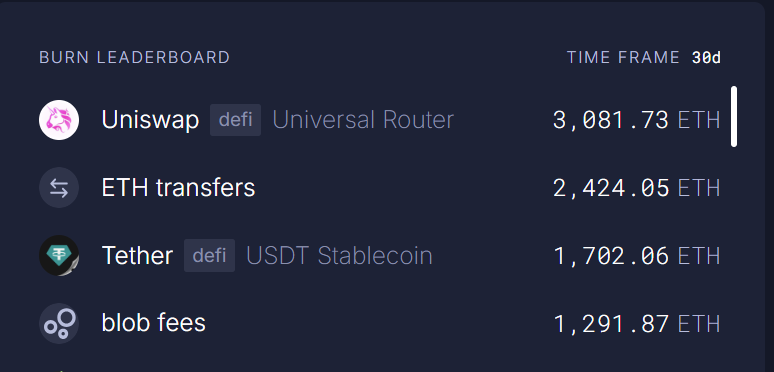Author: Mu Mu
Lu Xun never said: "No matter what sins you committed in your previous life, holding Ethereum is enough to pay them off." This round of Ethereum holders never thought that Ethereum would be so disappointing, once at the bottom of the trend among mainstream projects, but it is still too early to draw a conclusion, as the big market trend does not seem to have ended. If the adoption of Bitcoin is just beginning, Crypto and Web3 as a whole are still in the early stages. In 2025, can Ethereum "rescue" itself? What "events" and "breakthroughs" are worth looking forward to?
Inflow of Ethereum spot ETFs
Ethereum spot ETFs have been listed on the US stock market for some time, but the speed and volume of capital inflow are somewhat behind that of Bitcoin spot ETFs. In addition to the fact that Ethereum does not have the same "out-of-the-circle" and widespread consensus as Bitcoin, another important reason is that compared to the staking benefits of holding Ethereum itself, Ethereum spot ETFs without additional benefits but with management fees have no advantage.
However, the good news is that in 2025, financial institutions are actively promoting the listing of Ethereum spot ETFs that allow additional earnings through staking. The motivation to promote this is strong, as financial giants are the main beneficiaries of the "hot" trading demand for crypto asset spot ETFs, and Ethereum spot ETFs not only have potential demand, but also a more friendly regulatory environment due to the Trump administration, making it easier to get approved.
Ethereum strategic reserves
The Bitcoin strategic reserve being promoted by the US is one of the main drivers of the Bitcoin and crypto market. It is worth noting that in addition to gold, the US's important strategic reserve assets also include oil, so "digital gold" Bitcoin as a strategic reserve has certain feasibility and significance, and Ethereum, which was once called "digital oil", also has the hope of being listed as a strategic reserve asset.
Compared to Bitcoin, in fact, the WLFI project of the Trump family, which is deployed on the Ethereum mainnet as an ecological project, is mainly based on the support of the Ethereum DeFi ecosystem AAVE and Chainlink, and the project treasury has also started to accumulate a large amount of ETH and Ethereum ecosystem Tokens, and has recently converted a large amount of WBTC into ETH. According to the analysis of the 7 multi-signature wallets of the project treasury, some of the wallet addresses have already become "old hands" in the Ethereum DeFi ecosystem, so the project team has a high understanding of Ethereum and its ecosystem, and their operations are relatively professional.
Given that the team behind Trump has launched an Ethereum ecosystem adoption project, we can conclude that they have a high degree of recognition for the future development of Ethereum and its ecosystem, supporting the development of high-tech industries such as Web3, which is also in line with Trump's "America First" concept. Therefore, the possibility of Ethereum being mentioned as a strategic reserve asset in 2025 is not low.
The next major upgrade of Ethereum
Due to Ethereum's disappointing performance, the attention to its next major upgrade, codenamed "Pectra", is not high. It is reported that 10 EIP improvement protocols have been added to this upgrade plan, mainly involving user experience optimization and Layer2 support optimization, with the following main highlights:
1) Optimization of account abstraction
This upgrade will optimize the wallet usage experience, allowing regular wallet addresses to also have the complex functions and flexible operations of "contract wallets", such as "gas payment, social recovery, multi-signature" and so on. These optimizations will further reduce the user's usage threshold, so that when using Web3 applications, the experience can be as simple as using Web2 applications, laying the foundation for the large-scale adoption of future Web3 applications.
2) Optimization of Layer2 support
Provide more data space (blob) for Layer 2 solutions to enhance Ethereum's scalability. Reassess and adjust the cost of calldata, optimize block throughput and storage. In simple terms, it is to expand the data space for Layer 2, optimize the fees, so that the supported Layer 2 capacity is larger and the fees are lower.
3) Improve the security and flexibility of validators
Optimize the processing of validator voting, withdrawal and other operations to improve security and efficiency, while increasing the staking limit of 32ETH, which is equivalent to merging the running validator nodes, reducing the operation and maintenance pressure and improving efficiency, while also reducing the pressure of point-to-point message transmission and data storage between a large number of nodes in the network.
In summary, Ethereum's Pectra upgrade will provide support for a more user-friendly, more scalable, and more stable Ethereum ecosystem at the technical level.
Outbreak of ecosystem applications and technological progress
At present, more and more institutions such as the Trump family's DeFi project, Sony's Layer2, and Deutsche Bank's Layer2 are building Web3 applications and infrastructure solutions on Ethereum, and Ethereum ecosystem is the first choice.
Ethereum ecosystem is mature, rich and diverse, and leading in terms of technical resource reserves, development history, development team support, on-chain capital volume, client security and wallet user experience. Similarly, in the next stage of the big market trend in 2025, whether it is the strong resurgence of DeFi or the hot new tracks like AI Agent, Ethereum as the underlying infrastructure will greatly benefit from the adoption of these ecosystem applications and the prosperity of on-chain activities, including but not limited to capital inflows, Gas consumption, Token supply deflation, etc.
With the launch of Unichain, the OP super-chain family has added another heavyweight player, and the cross-chain liquidity of Layer2 is expected to make progress in 2025. Combined with Ethereum's own upgrade optimization support, the synergy formed by the team of Layer2 will pose unprecedented competitive pressure on some high-performance new public chains.
In the past, some people have said that Ethereum's Layer2 is a failure, sucking the mainnet and not bringing any benefits to the mainnet, but we have also seen the prosperity of Layer2 in recent times. Data from ultra sound money shows that the Blob fees of Layer2 have become one of the major Gas burners of the Ethereum mainnet, which also shows the success of the Layer2 scaling solution.
The real-time statistics chart of L2Beat also reflects that the capital inflow to Layer2 has exceeded $55 billion, and the total expansion capacity is more than 2500% of the original single mainnet.
For outsiders like Sony and Deutsche Bank, Layer2 is an excellent entry point for Web3 business, as they can start without a large amount of technical reserves and resources, and natively obtain the support of the Ethereum ecosystem community. Therefore, the real institutional adoption wave of Layer2 will soon arrive under the leadership of these institutions.
Summary
In fact, many people are clear that the advantages of Ethereum and its ecosystem are quite obvious, it's just that they didn't expect the current scale of Ethereum to be something that can be quickly driven by the capital of the previous two rounds. Obviously, this is not an easy task, just like the level of Bitcoin, the large influx of institutional capital from spot ETFs and the super-strong expectation of being a US strategic reserve asset are what enabled it to rise rapidly. However, compared to Bitcoin, Ethereum also has the additional boost of technical upgrades and the development of the Web3 ecosystem, so there are still quite a few highlights to look forward to in 2025. Let's wait and see what happens next.










